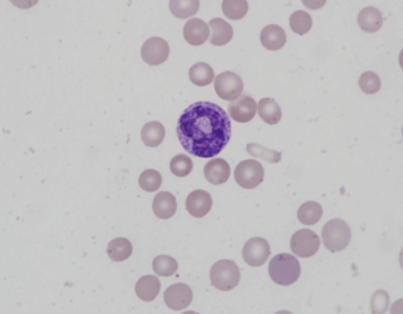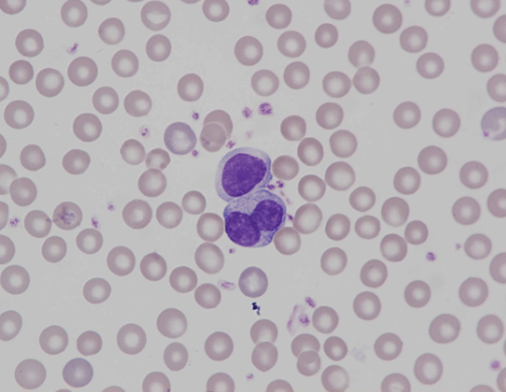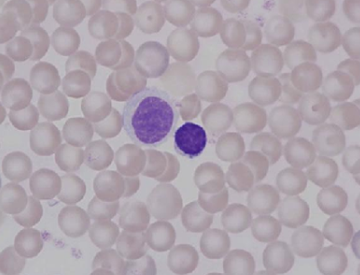Scientific Image Gallery
Welcome to our Scientific Image Gallery. Here you can find real-life examples of cell images, mostly (but not only) from peripheral blood films, that illustrate typical morphologic characteristics pointing to specific conditions or disorders. This constitutes their diagnostic value.
Click on an image to enlarge it and display a short description.
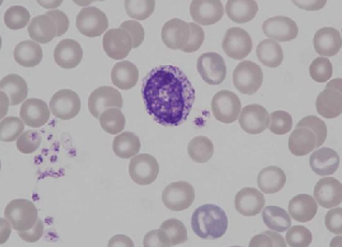
The nucleus is doughnut-shaped with a clear outline suggesting that the basophil is relatively juvenile. Numerous small, purple granules are present.
<p>The nucleus is doughnut-shaped with a clear outline suggesting that the basophil is relatively juvenile. Numerous small, purple granules are present.</p>
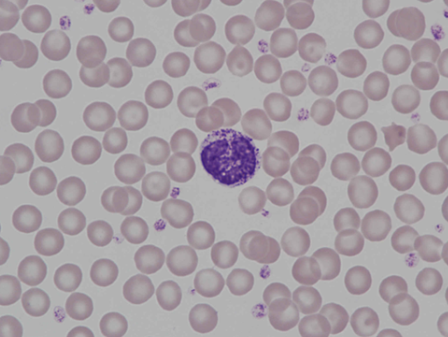
Basophil of a Brown Norway rat with a ring-shaped nucleus that is broken and appearing C-shaped. The cytoplasm contains numerous basophilic granules.
<p>Basophil of a Brown Norway rat with a ring-shaped nucleus that is broken and appearing C-shaped. The cytoplasm contains numerous basophilic granules. </p>
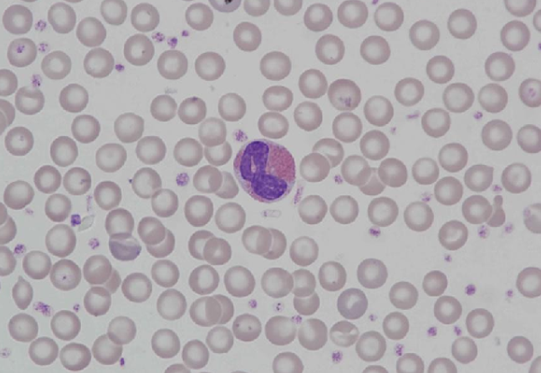
Typical eosinophil of a rat. The doughnut-shaped nucleus is twisted and there are numerous small, round, reddish granules filling the cytoplasm.
<p>Typical eosinophil of a rat. The doughnut-shaped nucleus is twisted and there are numerous small, round, reddish granules filling the cytoplasm.</p>
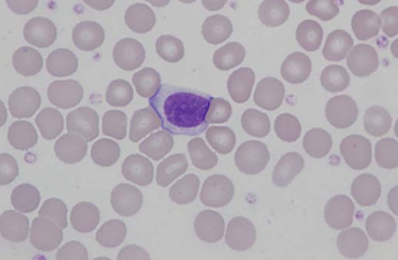
Large lymphocytes have a diameter up to 15 μm with a variable amount of cytoplasm, varying from deep to pale blue, sometimes containing large, dark staining, azurophilic granules.
<p>Large lymphocytes have a diameter up to 15 μm with a variable amount of cytoplasm, varying from deep to pale blue, sometimes containing large, dark staining, azurophilic granules.</p>
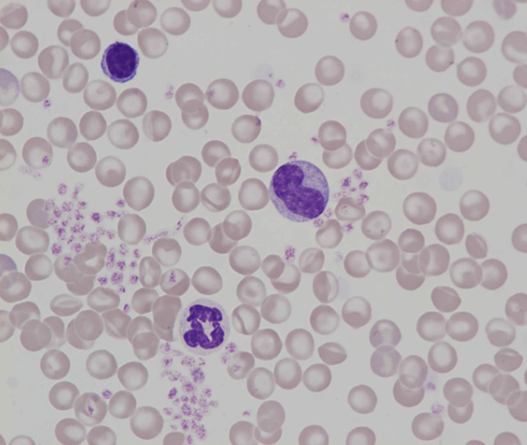
Small lymphocyte in the upper left, monocyte in the centre, neutrophil in the lower left of the high-power field. Mild platelet aggregation.
<p>Small lymphocyte in the upper left, monocyte in the centre, neutrophil in the lower left of the high-power field. Mild platelet aggregation.</p>
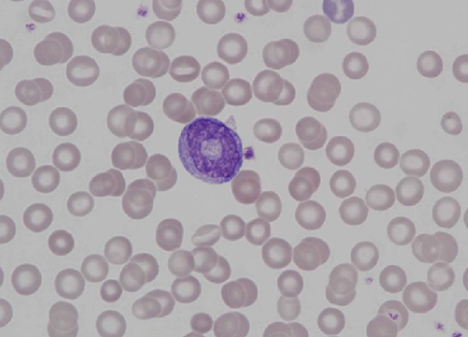
Metamyelocyte with a smooth, doughnut-shaped nucleus and bluish cytoplasm. Metamyelocytes are usually not found in the peripheral blood of rats. This blood smear is of an aged animal showing a picture of anaemia.
<p>Metamyelocyte with a smooth, doughnut-shaped nucleus and bluish cytoplasm. Metamyelocytes are usually not found in the peripheral blood of rats. This blood smear is of an aged animal showing a picture of anaemia.</p>
